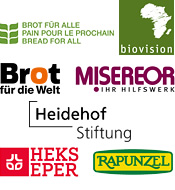News
13.10.2016 | permalink
Africa remains the main target for land grabs by foreign investors

Since the year 2000, foreign investors have acquired 26.7 million hectares of land around the globe for agriculture, with Africa being the most affected continent. This means that around 2 per cent of the arable land worldwide, or roughly the equivalent to an area the size of the United Kingdom and Slovenia together, has been transferred into the hands of foreign investors. That is the message of a new report released by the Land Matrix, an independent initiative that collects and evaluates data on land acquisitions in low- and middle-income countries. The report shows that these concluded international land deals for agriculture are only the tip of the iceberg. Overall, the Land Matrix captures 1,204 concluded deals (for all intentions), which cover over 42.2 million hectares of land. In addition, intended deals target 20 million hectares and failed deals 7.2 million hectares. The 26.7 million hectares under contract for agricultural purposes consist of 1,004 different agreements. In the case of almost 70 per cent of these land deals, agricultural activities have already started. “We are observing not only that more and more agricultural lands have changed hands, but also that they are increasingly being actively cultivated and used – for example, to grow grain, oil palms, and sugar cane,” said GIGA research fellow Dr. Kerstin Nolte, one of the report’s authors. The cultivation of food crops is the main intention of agricultural investment with 9.2 million hectares, followed by unspecified agricultural intentions (5.6 million hectares). This can largely be attributed to so-called flex crops which can have multiple end uses, for example as food, animal feed, fuels or industrial materials. Oil palm is the largest of these crops, with multiple usages including food, fuel and cosmetics. On 5.1 million hectares of land, investors intended to produce agrofuels. The report says Africa is the continent most impacted by land deals, with 422 deals covering a total area of 10 million hectares. Eastern Europe is the second most important region, mostly due to the large average size of land per deal: 96 concluded deals are covering 5.1 million hectares. Southeast Asia is another heavily impacted region. Most of the investors are from Malaysia, the United States, Great Britain, Singapore, and Saudi Arabia. Western European investors are involved in 315 land deals covering nearly 7.3 million hectares. Land deals often target areas that have previously been used for agriculture by local farmers and communities. This creates increased competition for land and the potential for conflicts with the local population, frequently leading to forced displacements. “A lack of transparency and the marginalisation of local stakeholders weaken the bargaining position of smallholder farmers and pastoralists, including indigenous peoples” , warns co-author Markus Giger from the University of Bern. The report says that during the start-up phase, when farms are being established, there is high labour demand for construction work and infrastructure development, but this lasts for a short period of time only. “We find very low intensities of labour, suggesting the prevalence of capitalintensive production methods and therefore limited capacity to create rural employment.” Large-scale land acquisitions can also have negative consequences for the environment due to agro-industrial production methods. One key concern is an increase in water scarcity. According to the authors, more research is needed to determine the economic, social and political impacts of land grabs. “The more we know about these deals, the better we can understand how they will affect local people,” the authors conclude. They also highlight the need to assess the impact of large-scale land acquisitions in the context of achieving the Sustainable Development Goals (SDGs) set by the international community in 2015. (ab)

